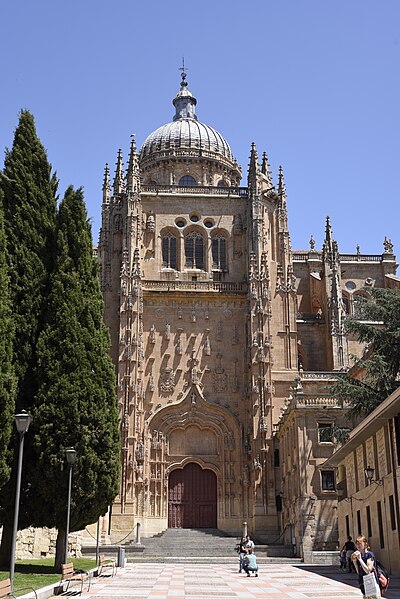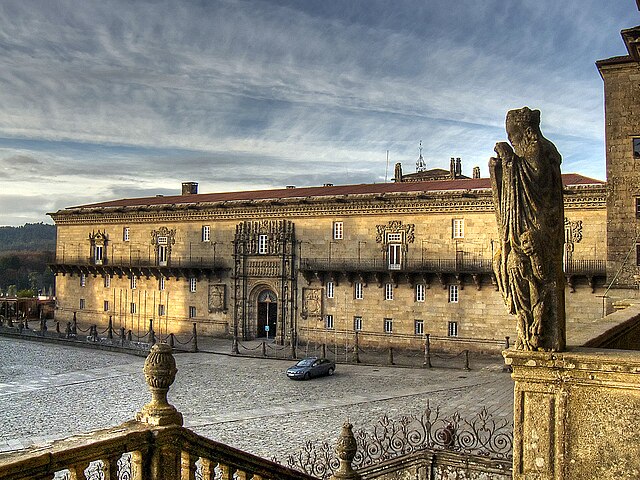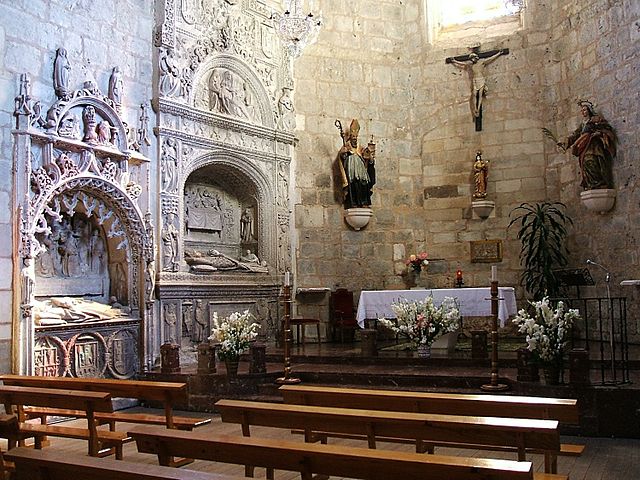The Seville City Hall is a Plateresque-style building in Plaza Nueva in Seville, currently housing the City Council of Seville.
Plateresque façade of the Casa consistorial, Seville City Hall
Plateresque façade of the city hall in Seville, on the Plaza de San Francisco. The reliefs in the upper and right sections were never completed.
Main façade of the Town Hall of Seville, on the Plaza Nueva, expanded in the Neoclassical style in 19th century.
Apeadero, formerly where those who entered dismounted their horses.
Plateresque, meaning "in the manner of a silversmith", was an artistic movement, especially architectural, developed in Spain and its territories, which appeared between the late Gothic and early Renaissance in the late 15th century, and spread over the next two centuries. It is a modification of Gothic spatial concepts and an eclectic blend of Mudéjar, Flamboyant Gothic and Lombard decorative components, as well as Renaissance elements of Tuscan origin.
New Cathedral of Salamanca (1513-1733) in the Plateresque made city of Salamanca, Castile and León, Spain
Hospital of the Catholic Monarchs (1501-1511), in Santiago de Compostela, Galicia, Spain
Altar plateresque of the Cistercian monastery of Santa María del Salvador, in Cañas, La Rioja, Spain
Plateresque tomb of the Saint Juan de Ortega, next to another tomb of late Gothic style, in the Convento de Santa Dorotea (15th century), in Burgos, Castile and León, Spain








